How to Make a Useful Infographic
Useful Steps:
A lot of work goes in to successfully presenting information. Infographics have become a more and more popular way to do so. Infographics portray data and information quickly and accurately to your audience. The first step to doing so is to truly understand what it is you are trying to explain. Once you do then you will begin data collection. This step is crucial because your data is your story, if your data is incorrect or doesn’t support your story then your visual will not be useful. After you have data that accurately reflects your idea you must be able to visualize it in a way that is not only clear but appealing to look at. The audience will not take much away from a visual that is confusing or dry. Avoid throwing too much information out in the infographic itself, let the visual do the storytelling.
Infographic Examples:
Below are two different charts using the same data to portray different messages. The use of colors are uniform between both graphs allowing you to flow back and forth between the two. Also helping that idea is how they stacked them on top of each other. Overall these two visuals provide a clear set of information that you could understand without really having any prior knowledge on the subject.
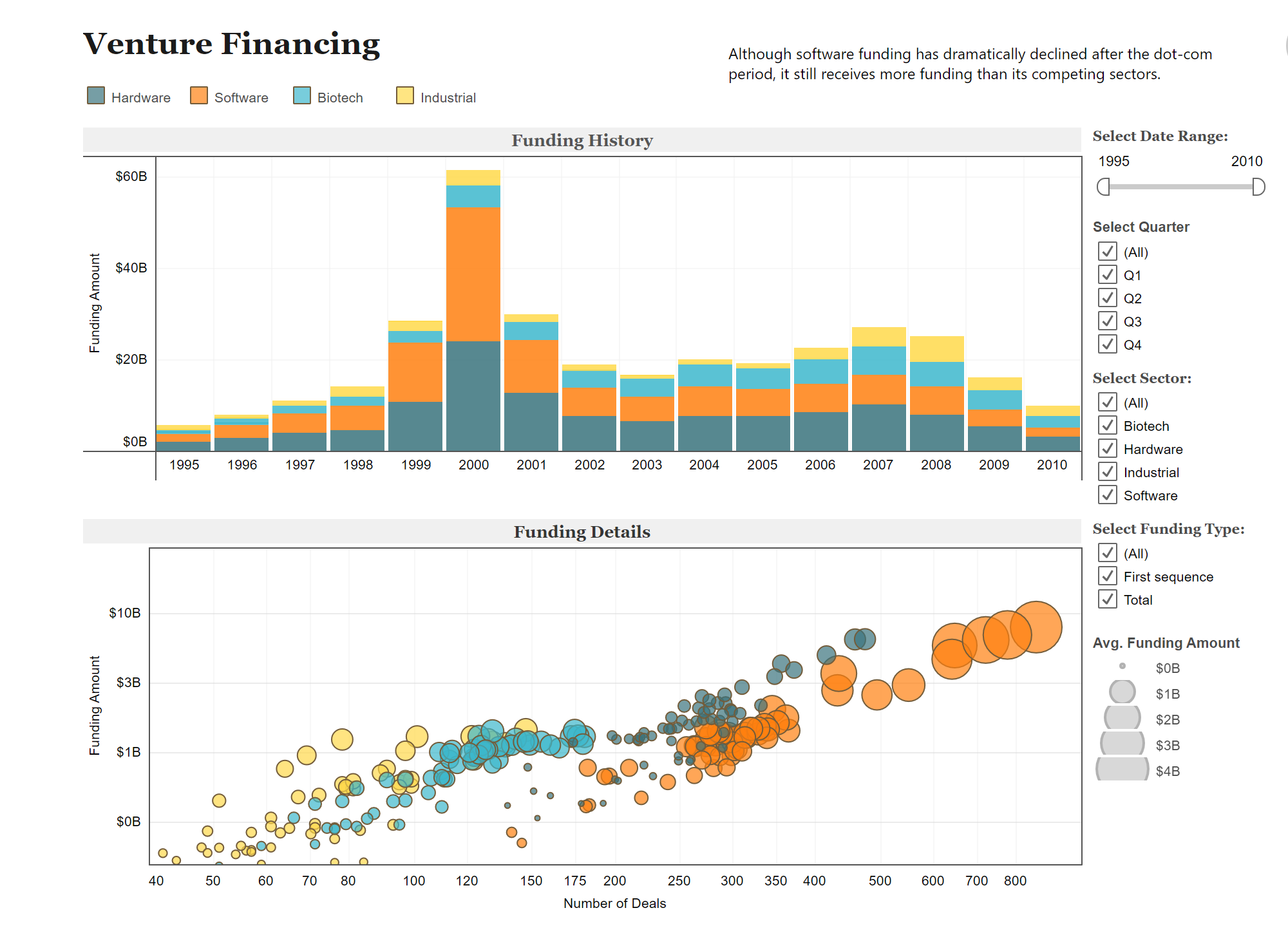
Data Set Examples
Attached is a link to a site with examples of many different, useful, data sets. Click the link to explore the different ways data can be manipulated.
Podcast: Play in new window | Download
Insightful Data Visualizations
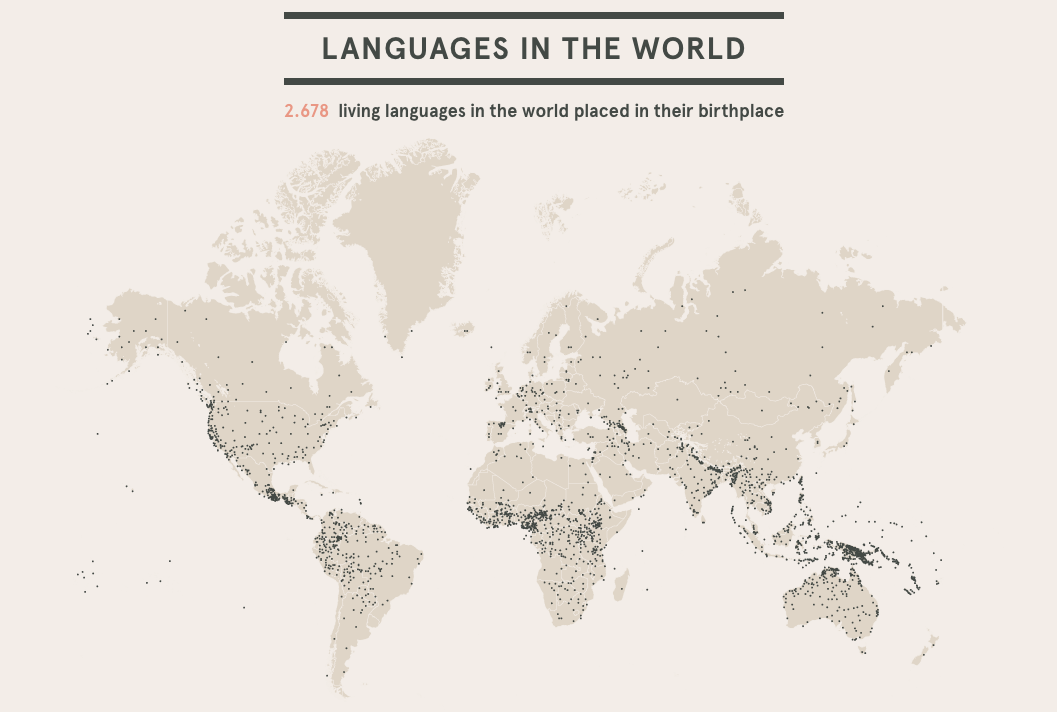
Link to Image: https://cdns.tblsft.com/sites/default/files/pages/6_after_babylon.png
Infographics are an inventive and creative way to share information with others and hold their attention. The beauty of infographics is that there is no specific way that one should look, leaving creators with hundreds of different layouts to choose from. One such way to share information is through a data visualization, as shown above. Data visualizations are a form of infographics that allow a person to share a set of data through one big image rather than multiple facts and smaller images. In the case of the data visualization above, viewers are able to see just how many languages are spoken in the world. The creator of this visual decided that the best way to do this was to use a map of the world, with each small black dot representing the general area/region of the language. A data visualization like the language one puts into perspective how many different languages are spoken not only around the world, but also in a general area or community, which is something that a lot of people may not have been fully aware of before. If the number of languages were just listed in a chart with the region that it is spoken, it may not have been as fully effective as the one above.
The creators of this data visualization are a part of a project known as After Babylon. Their goal, as stated on their website, was to analyze the “current linguistic situation of the world”. The map above was only one of many different maps and graphs shown on their website to help people fully grasp the language situation in the world. One of the brilliant features on their website was to make some of the maps and graphs interactive, making it easier to pinpoint languages and their origins for a full understanding. Overall, After Babylon’s work of the languages in the world using data visualizations and infographics proved just how important these tools are when it comes to sharing information with your audience and keeping them interested in the topic.
Insightful Data Visualization
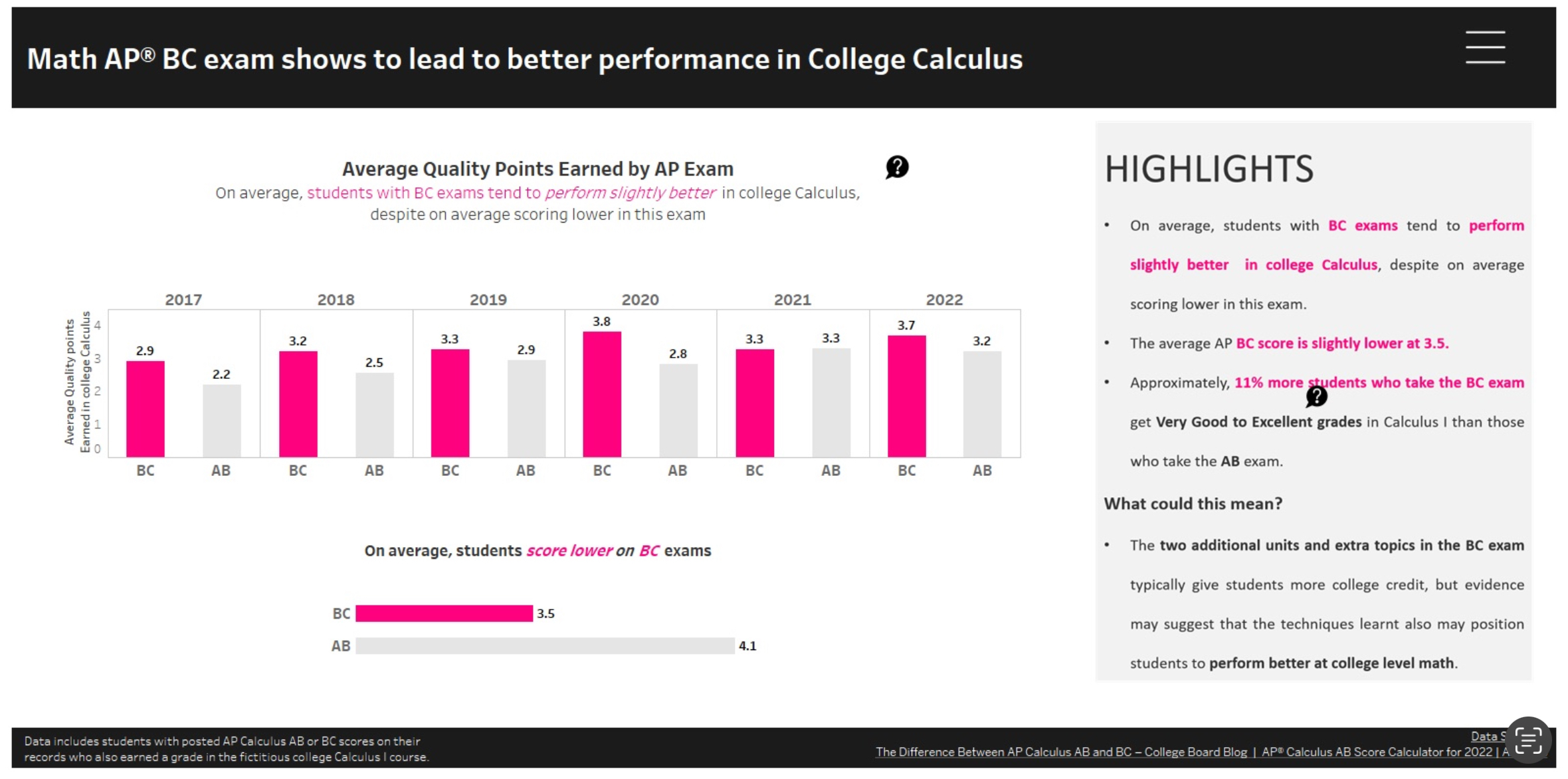
Data graphs are an essential way to display information effectively and efficiently. Graphs are essential to everyday and something seen all the time. Visual data has been around since 1786 when William Playfair used charts to showcase British trade and debts. One of the most important aspects of data visualization is clarity. In the image above, it depicts the relationship between student grades in AP Calculus and how well students perform on the test. What makes this infographic successful is the clarity shown throughout it. The infographic is clearly defined by the title given. They also included an interactive aspect to allow individuals to hover each column presented to view more details. By creating an interactive infographic, it causes more engagement due to the information scattered throughout. On the right hand side, they included important key details relating to the study. It allows for individuals to make their own discoveries and dissecting the information. According to UX Planet, “Insights are patterns in the observations we make in the world. They give us an understanding of a specific cause and effect within a specific context. They help us explain our observations.” Insights provide us with a different perspective in order to reframe the problem and provide a different way of thinking. The infographic above represents insightful data due to the offer of understanding of the topic.
Podcast: Play in new window | Download
Creating an Infographic
Here are some of the tools I found incredible to create an infographic in each pricing categories.
CANVA (Free)
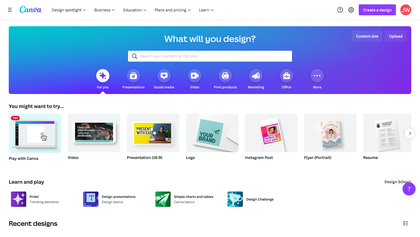
Canva is a tool that perhaps well known among many especially younger people. Canva is hugely popular due to its simple way of creating an infographic, poster, presentation, etc… with a few touch of a button. As a free tool and with a wide selection template, Canva is no doubt a perfect place for creating high-quality visuals with no design experience required.
Adobe Illustrator (Monthly Subscription)
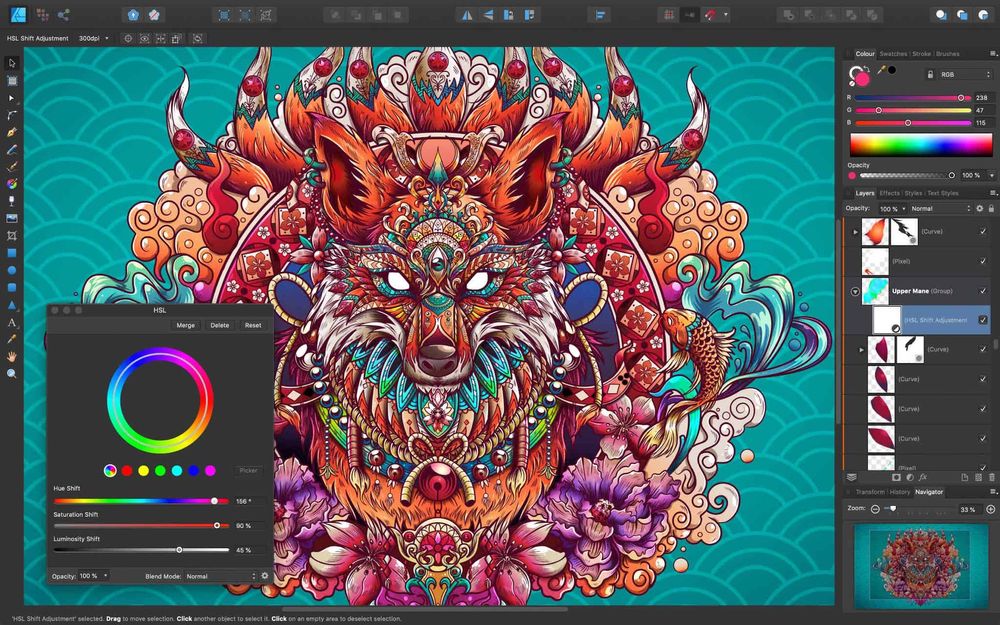
Adobe Illustrator is practically the industry standard and often the program of choice for professional graphic designers and digital artists. Its available tools and features allow to efficiently create and edit high-quality designs for a wide variety of uses. Comparing to other free choices, Adobe Illustrator is much more difficult to use due to professional settings. Adobe Illustrator is costly to use as its monthly subscription does not come in one application rather than a package with multiple applications.
Affinity Designer (One-time Purchase)

Designed as a cheaper alternative to Adobe Illustrator but a strong rising competitor. Affinity Designer can be use in a similar way to Adobe Illustrator but it has a much more gentler slope of learning comparing to its predecessor. Designer is also available to many platform with its iPad app became one of the best and best selling design apps on the market. One down side of Affinity Designer using on multiple platform is the need to purchase separately for tablet version and PC/Mac version.
Effective Data Visualization
Infographics are visual representations of any information or data that can be displayed through images, charts, or icons. The goal of using these is to summarize or break down concepts more concisely. I researched examples of insightful data visualizations where I found Harvard’s Business review article that covers this topic. The article highlights the importance of storytelling through infographics to engage with observers efficiently. Examples about creating visualizations that are informative is included in the text. One of the topics spoke on the Gartner Hype Cycle, it is “traditionally data-driven form—a line chart—but no actual data” which is a graphical representation used in research to track data. It is done using complete visuals to analyze progression of technology (Harvard Business Review). The circumstances are very business based and are used in real life situations which I found very interesting.

Podcast: Play in new window | Download
Insightful Data Visualization

Data graphics are an especially useful way to share information quickly and effectively. Somewhere data graphics can be useful is the classroom. To summarize from “8 Examples of How Middle Schools Can Incorporate Infographics in the Classroom” article from Venngage; within a classroom there is so much information for student to absorb. Having data graphics on the walls of the class would greatly help students in retaining information. Other ways data graphics could be used is for introducing new material to students, the visuals will be a nice aid for student who are learning topics for the first time. In conclusion information graphics can be a helpful tool for students.
Infographic Design Tools: Visme
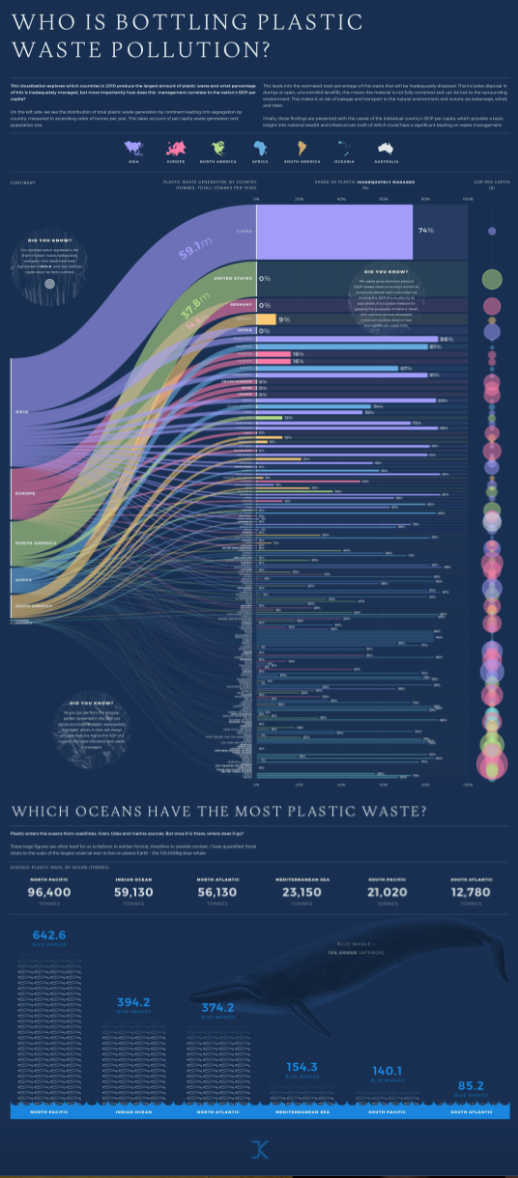
The above link to the infographic image
In our daily life how many plastic bottles of water, cold drinks or coffee cups are we using no one have any idea about how much plastic waste is thrown into the ocean worldwide. However, with the help of infographics, it is very easy to track that which country is doing more plastic waste pollution. This is the data based on the distribution of total plastic waste generation by continent. The purpose of this blog is to estimate the percentage of plastic waste that was inadequately disposed of. These types of graphics present complex information quickly and clearly. The infographic provides a great amount of complex information in a clear and precise picture of the current surface plastic mass by the ocean, measuring it in a creative way. In a bar graph, we can see plastic waste management for every country in a colored bar chart. The names of the countries that report 100% of all their plastic waste handled properly are highlighted in bold. In addition, the GDP of the country and efficient plastic waste management don’t always correspond as we can see by the irregular patterns shown in the infographic.
Reference
https://visme.co/blog/best-data-visualizations/
The Importance Of Infographics and Data Visualizations

https://visme.co/blog/best-data-visualizations/
Infographics is an everyday part of our lives. There are many instances where it can be used to aid others in understanding certain complex concepts through the use of visual aids. It can be used anywhere from teachers trying to teach a class about a certain topic, or a marketing firm presenting a new product. One such method that uses infographics includes the use of data visualizations to not only observe but also predict the current course of asteroids in space. According to Visme, NASA’s eyes on asteroids visualizations ” provides up-to date information on the position and trajectory of asteroids”. This means that NASA is able to use the data visualization to possibly see any threats that could be approaching our planet and prepare ahead of time. Furthermore, as shown by the picture above, the data visualization contains a plethora of information about many asteroid paths with their names and projected paths. There are even some planets that are within our solar system such as Jupiter. The abundant amount of information being shown in such an easy to understand manner is only possible because of infographics. To add on to this, there is also a higher chance of the information being shown to be retained by the audience because of its simplicity. It has long been known that people are typically more likely to remember information that leave a strong impression on them, and portraying a 3D real time model of space is definitely one way to do that. However, predicting asteroids isn’t the only thing that infographics are used for. There are also many data visualizations that analyze the social or historical aspects of society such as the seven wonders. With that being said, Infographics is a major resource that can be utilized in many ways in order to learn, retain, and predict information.
Tools that may help us construct Infographics
There are many tools and websites that can help you construct an infographic with one easy search on Google. From my quick research, I found that the easiest websites to navigate (not the best) and create an infographic are Canva, Adobe Express, and Infogram. Canva is known for its user-friendly, intuitive interface that makes it usable by users with different degrees of design ability. To produce infographics with a professional appearance, you are not required to be a graphic designer. Infographic templates in a variety of designs, topics, and uses are available from Canva. These pre-designed, eye-catching templates can help you get going quickly. You can pick a template based on the type of content and presentation you prefer. Adobe Express makes it so have precise control over the design of your infographic, it enables you to generate scalable visuals and icons, utilize a variety of drawing tools, and work with layers. Infogram makes it easier to create infographics by providing a user-friendly interface, pre-designed templates, and data visualization tools, enabling users to quickly create informative and aesthetically pleasing infographics.

Sources : https://www.practicalecommerce.com/tools-for-creating-infographics
- https://www.unboxsocial.com/blog/tools-to-create-engaging-infographics/
- https://shrutideshpande.co.uk/why-infographics-are-important-to-your-content-marketing/

Infographics
Exceptional visualization examples: Kurzgesagt

Link to image: Kurzgesagt | Logopedia | Fandom
Link to channel: Kurzgesagt – In a Nutshell – YouTube
For this week’s blog post, I am sharing one of my favorite content creators from YouTube. Their channel is titled “Kurzgesagt – In a Nutshell,” and they specialize in short, scientific, informational videos. All of their content contains a great deal of creative, and effective infographics. Kurzgesagt excels at achieving the ideal blend of artistic expression and information display, often the main focus of information visualization. Combinations of encaptivating characters, objects, and places alongside smooth and crafty transitions help to educate the general public on some fascinating topics. All that is required is to find a topic or title that jumps out to you, and their videos will speak for themselves.

